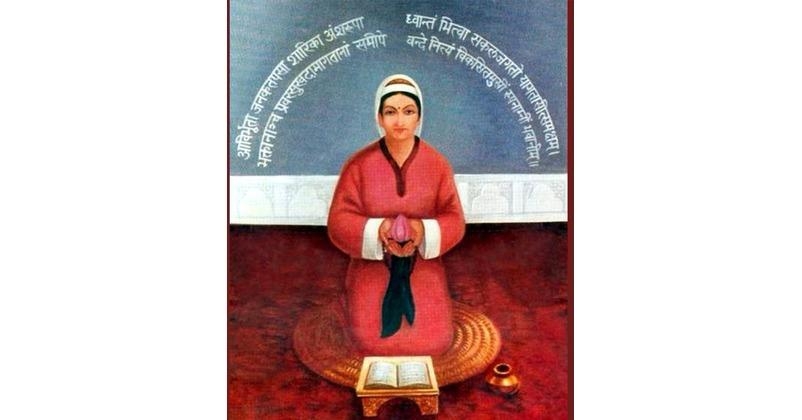Sanjeevani Sharda Kendra Jammu Celebrates 404th Prakash Utsav Jayanti of Mata Roop Bhawani
Total Views |

Sanjeevani Sharda Kendra, Bohri, Jammu, on Wednesday, June 11, celebrated the 404th Prakash Utsav Jayanti (Birth Anniversary) of Shree Sharika Incarnate – Alakhishwari Mata Roop Bhawani.
The life and times of Mata Roop Bhawani
In the seventeenth century Kashmir, Pandit Madhav Joo Dhar lived in Srinagar’s Nawakadal. A man of God and philosophical temperament, he worshiped the Supreme Being (Ishwara) in the form of the Sharika Mata.
Every day, he would walk up the hill in Srinagar, locally known as Hari Parbat or Sharika Parvat, to pray and bow before Goddess Sharika for protection. At the temple, Maa Durga is believed to have taken the form of Sharika, a mynah bird. The entrance to the Goddess at the temple is represented by the Sri Chakra — a sacred, geometrical mystical pattern — etched in sandy rock and anointed with sindur.
As the legend goes, Pt. Madhav Joo Dhar was an ardent devotee of Maa Sharika and used to offer prayers for hours at the temple. On the first day of the Navaratri in the month of Ashwin, in the year 1620, Madhav Joo arrived for worship at midnight to continuously worship the Goddess on this most auspicious occasion.
Responding to the prayers, Maa Sharika herself appeared before him and asked for a boon. Madhav Joo asked for Maa herself in the form of his daughter and that is how Alakhishwari was born on Poorna Amavasya in the month of Zyeshta in the year 1621. As she grew, so did her spiritual tendencies. Nurturing her spirituality, Madhav Joo became her guru and gave her spiritual initiation (Deeksha). However, as was the norm then, her father arranged her marriage to a young man of the nearby Sapru family.
Akhileshwari’s married life, however, turned out to be unhappy as her husband, Hiranand Sapru, lacked all understanding of her spiritual nature and her life in this house was difficult and joyless.
She asked Hiranand to join her. However, there appeared a vast expanse of water, impossible to cross, between himself and her. Sapru, disheartened, was forced to return home.
After receiving mistreatment from her husband and in-laws, she left the house in pursuit of God. Seeking a solitary retreat, she selected a location to the north-east of Srinagar, known by its ancient name Jyestha Rudra. Here she did intense tapasya for twelve and a half years, and began to glow with the fire of spirituality.
As people flocked to her, she moved to a village called Mani Gaon, in north Kashmir, on the banks of the Ganges in the foothills of the Himalayas to seek a more solitary retreat. It was here that Akhileshwari transformed Rupa Bhavani. Later, she also moved away to a quieter spot in the village of Vaskura, where Naga Vasuki did his tapasya to attain the Grace of Shiva.
It was in Vaskura that Mata Rupa Bhavani began to shower on her numerous devotees and many miracles are attributed to her. There was a young boy, blind from birth, who served her with great devotion. Bhavani's compassionate heart was moved by his sad condition. She gave him a stick and asked him to dig the earth with it. He immediately obeyed her.
Many devotees gathered nearby, watching. Then, there was one incident where a father implored Bhavani to educate his illiterate son.
Bhavani gave the boy a pen and some paper and ordered him to write. Miraculously, the boy began to write fluently like a highly educated person.
In Vaskura, Bhavani began to give spiritual instruction to his brother Bal Joo Dar and Sadanand Mattoo in the form of poetical verses, called Vakhs. 145 of her Vakhs were passed down through generations of oral traditions.
Thereafter, She returned to Srinagar and began to live in Safakadal. On the Saptami Tithi, in the month of Magha in the year 1721, Bhavani's soul attained Nirvana. When Her body was being carried to the cremation ground, the local village head shrieked that he had just seen Bhavani walking down the road by which he came! When devotees looked inside the coffin, they found nothing there but some locks of her hair and some flowers.
(About the content- Sanjeevani Sharda Kendra— @sskjammu)

